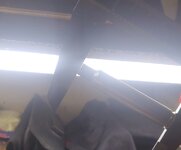What would cause the rim of the neck to not be square, or more precisely, parallel to the base? Is this an issue to fix?
Photo isnt the greatest as I tried to get the light to show the gap. This is twice fired Nosler Premium brass and fully sized, I dont need to trim it but have been to square them up but it keeps coming back.

Photo isnt the greatest as I tried to get the light to show the gap. This is twice fired Nosler Premium brass and fully sized, I dont need to trim it but have been to square them up but it keeps coming back.












